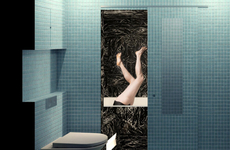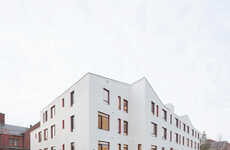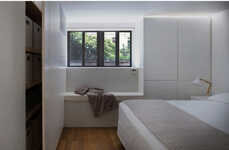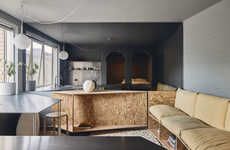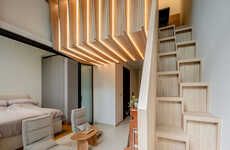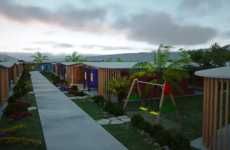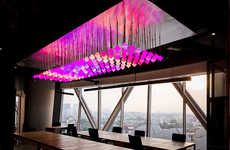
Michelle Ho's Proposal Involves a Retrofitting Housing Solution
Kalin Ned — April 10, 2019 — Art & Design
Michelle Ho from the Barlett School of Architecture reveals an ambitious concept that involves a range of adaptable co-living units. The proposal is geared toward the densification of cities.
The designer expects her idea to build on the aesthetic and functionality of pre-existing structures. Her concept engulfs the possible future for the Central Hill Estate which was erected sometime in the 1960s in south London. Michelle Ho envisions the co-living units to be perched upon "the remaining social housing structure." Dubbed 'Retrofitting the Community Estate,' the goal of the project is to maximize the use of space, enhance housing density and even providing the opportunity for flat customization.
The co-living units will also be mostly assembled off-site. Later, they will be installed and secured via tension cables.
The designer expects her idea to build on the aesthetic and functionality of pre-existing structures. Her concept engulfs the possible future for the Central Hill Estate which was erected sometime in the 1960s in south London. Michelle Ho envisions the co-living units to be perched upon "the remaining social housing structure." Dubbed 'Retrofitting the Community Estate,' the goal of the project is to maximize the use of space, enhance housing density and even providing the opportunity for flat customization.
The co-living units will also be mostly assembled off-site. Later, they will be installed and secured via tension cables.
Trend Themes
1. Adaptable Co-living Units - This trend presents an opportunity for companies in the construction industry to develop innovative housing solutions that can maximize space and enhance housing density.
2. Retrofitting Housing Solutions - This trend opens up possibilities for architectural firms to retrofit existing structures and transform them into adaptable co-living units, providing a sustainable and cost-effective solution for urban densification.
3. Off-site Assembly - This trend offers a disruptive innovation opportunity for manufacturers to optimize efficiency and reduce costs by assembling co-living units off-site and installing them later using tension cables.
Industry Implications
1. Construction Industry - The construction industry can capitalize on this trend by exploring innovative ways to design and build adaptable co-living units that address the increasing housing needs in densely populated urban areas.
2. Architectural Firms - Architectural firms can benefit from this trend by offering retrofitting services to transform existing structures into adaptable co-living units, meeting the demand for flexible and sustainable housing solutions.
3. Manufacturing Industry - Manufacturers have the opportunity to disrupt the housing market by adopting off-site assembly techniques, allowing for faster and more efficient production of co-living units that can be easily installed using tension cables.
3.1
Score
Popularity
Activity
Freshness


